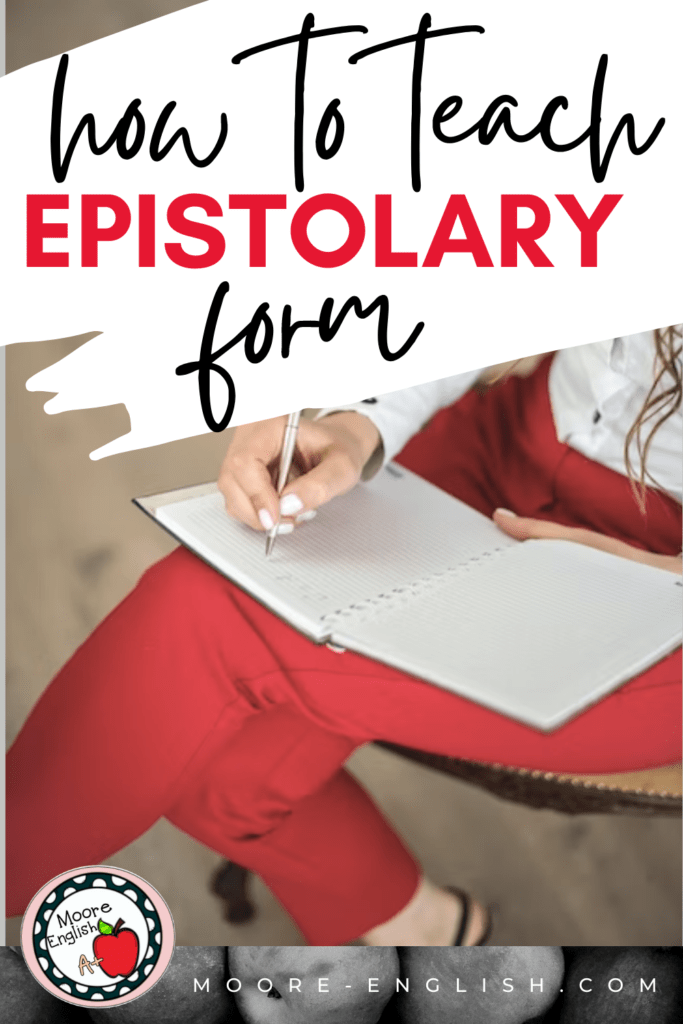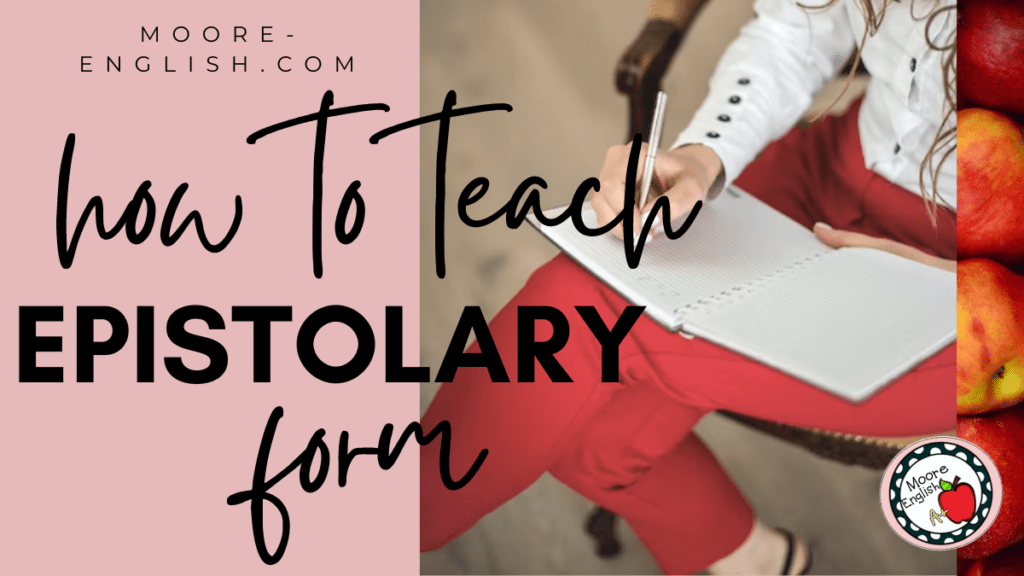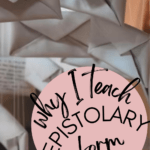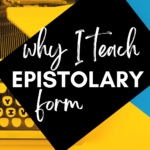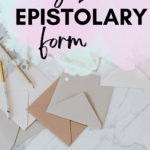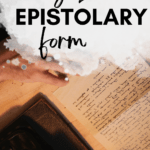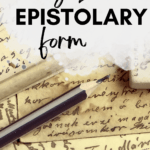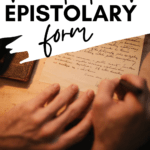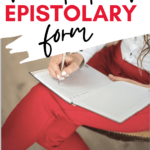My favorite scene in The Great Gatsby is when Jordan recounts the story of Daisy’s wedding. There’s something poignant and powerful about the image of Daisy wadding up Gatsby’s letter, putting on her pearls, and marrying Tom anyway. I think this scene is where my love of epistolary form began.
After I read this scene with students, they write Gatsby’s letter and then “send” it to one another. Students “mail” their letters in paper airplanes and then respond to one another from the perspective of Daisy. It’s a memorable lesson and a great writing activity.
While The Great Gatsby isn’t a true epistolary novel, it’s still a fun way to introduce the form. Here are some of the reasons I love teaching epistolary form:
- It’s a unique way to study an author’s choices regarding structure.
- There are lots of great ways to incorporate creative writing.
- Epistolary form helps students study tone.
This post this post may contain affiliate links. Please read the Terms of Use.
Poems for Teaching Epistolary Form
As I’ve said before, poems are a great way to introduce a new concept because they are so short. Students can see several poems in the same amount of time it would take them to read one longer work. Especially when we’re talking about structure, frequent exposure is a great way to help students see variety.
- Perhaps my favorite epistolary poem is “To Lucasta, Going to the Wars” by Richard Lovelace. There’s something about the speaker’s love for honor that I find touching. This is another instances where students can easily write a letter in response to the speaker. Read it here.
- Similarly, “[To an Army Wife in Sardis]” by Sappho is a good representation of the epistolary structure. This poem also opens up a fascinating conversation about reconstructing ancient texts and reading texts in translation. Since it’s unclear what relationship the speaker has with Anactoria, there’s a lot of great discussion students can have with this poem’s ambiguity. Read it here.
- Finally, “Penelope to Ulysses” by Meredith Schwartz provides an alternative perspective on The Odyssey. Since The Odyssey offers such a narrow depiction of Penelope, this text gives her a voice and unique point of view. Students can easily write their own letters to Ulysses or Penelope. Read it here.
Longer Works for Teaching Epistolary Form
Epistolary can be hard for writers to sustain. How do you keep an entire novel moving forward if characters only communicate in letters? And how do you help readers piece together a story told only through documentation? When these are questions you want students to explore, a longer work may be the best choice.
- First, there may be no more distinctly American piece of epistolary writing than “Letters from an American Farmer” by Michèle Guillaume de Crevecoeur. Even though students don’t usually know it, this is the text from which the idea of the American melting pot originates. This is also an excellent example of epistolary form in nonfiction writing. Read it here.
- “The Yellow Wall-paper” by Charlotte Perkins Gilman is also a great piece of epistolary writing. This is a unique title if you want to study epistolary form beyond letters. The narrator’s journal-like retelling is another interesting way authors may choose to structure a text. Plus, this is a text students never forget. Read it here.
- Finally, Pride and Prejudice by Jane Austen is one of the most well-known examples of epistolary writing. Because the text moves from traditional narration to epistolary writing, this is a perfect text for evaluating how the narrator’s tone differs from the characters’ tones in their writing. Check out my favorite resources for teaching Pride and Prejudice.
More Recommendations
Add some of these great epistolary novels to your classroom library today!
- Carrie by Stephen King
- Dracula by Bram Stoker
- The Martian by Andy Weir
- The Rook by Daniel O’Malley
- The Color Purple by Alice Walker
- Speak by Laurie Halse Anderson
- The Princess Diaries by Meg Cabot
- Code Name Verity by Elizabeth Wein
- Flowers for Algernon by Daniel Keyes
- Everything, Everything by Nicola Yoon
- Parable of the Sower by Octavia Butler
- Attachments or Fangirl by Rainbow Rowell
- The Handmaid’s Tale by Margaret Atwood
- Illuminae by Jay Kristoff and Amie Kaufmann
- To All the Boys I’ve Loved Before by Jenny Han
- The Year of Secret Assignments by Jaclyn Moriarty
- The Perks of Being a Wallflower by Stephen Chbosky
- Sorcery and Cecelia by Patricia Wrede and Caroline Stevermer

